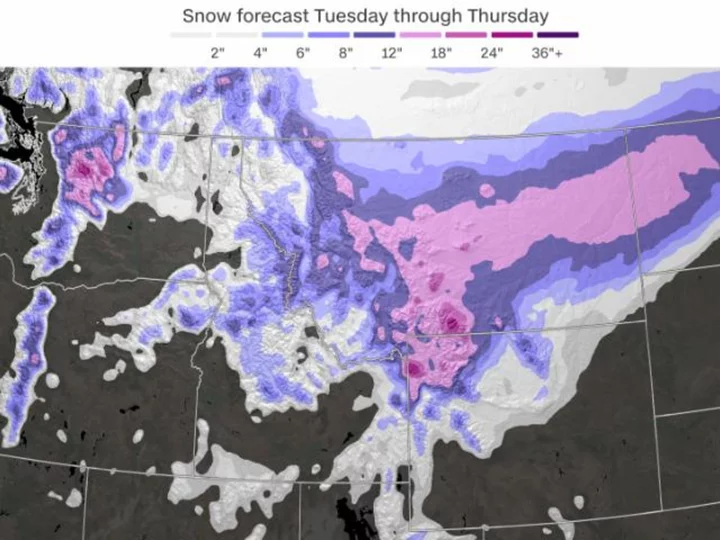The first significant snowfall of the season is on the way for the northwestern US and parts of the Northern Plains, and by the time the last flake falls, many high elevation areas will be buried in more than a foot of fresh snow.
A surge of cold air and deep moisture will spread from Washington and Oregon through much of Montana on Tuesday before a potent storm drops into the Northwest on Tuesday night.
Flakes will begin to fly as early as Monday night or Tuesday morning as moisture from this storm moves across the Cascades in Washington. The higher the elevation, the greater the chance for disruptive snow and tricky travel. Several key high-elevation mountain passes located in this part of the Cascades, including Stevens Pass, Snoqualmie Pass and Stampede Pass, could all be impacted.
Snow will kick off for the rest of the northwestern US Tuesday afternoon into Tuesday evening. Accumulating snowfall will begin to cover portions of Idaho and Montana as well as the Cascades in Oregon during this window as temperatures struggle to climb above the freezing mark.
Temperatures will plummet Tuesday night and force many high-elevation locations to fall well below freezing. Temperatures in northern Idaho will drop into the teens by early Wednesday morning while parts of northwestern Montana will bottom out in the single digits.
The combination of frigid air and ample moisture will set the stage for heavy snow to develop on Tuesday night. Six inches or more of snow could pile up quickly at pass levels in the Cascades on Tuesday night, with amounts approaching a foot possible for areas above 7,000 feet.
Snow accumulations will climb higher on Wednesday across the Northwest and northern Rockies. Wind speeds will also increase during this time and blow snow, which could significantly reduce visibility and worsen travel.
While the most significant snowfall totals from this storm will be in the highest elevations, some low elevation spots in Washington, Montana and South Dakota will not completely escape wintry weather.
A few inches of snow will accumulate down to 1,000 feet in parts of Washington on Wednesday, but Seattle will endure only a chilly rain.
Snow will begin to wind down across the Cascades on Thursday, but will overspread portions of the northern Plains as the storm treks east. More than a foot of heavy snow will bury parts of South Dakota on Thursday and into Thursday night.
Another risk will arise where snow does fall in lower elevation areas -- melting and refreezing. Any snow that melts during the day will only freeze up overnight and cause treacherous ice to form along roadways and sidewalks.
By Friday, significant accumulating snow will come to an end across much of the northern US, but a few flakes will still fly along the US-Canada border before the storm crosses fully into southern Canada.

